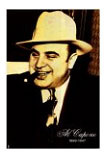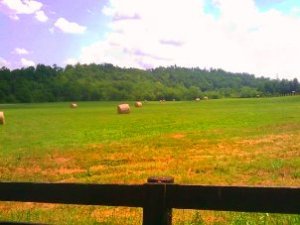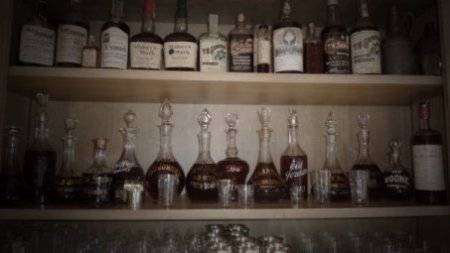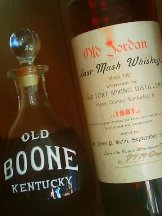Whiskey Homeland
 Ken⋅tuck⋅y /kənˈtʌki/ -noun:
Ken⋅tuck⋅y /kənˈtʌki/ -noun:
| 1. | a state in the E central United States. 3,661,433; 40,395 sq. mi. (104,625 sq. km). Capital: Frankfort. Abbreviation: KY (for use with zip code), Ken., Ky. |
| 2. | a river flowing NW from E Kentucky to the Ohio River. 259 mi. (415 km) long. |
In Kentucky, Jesus may be Lord, but Bourbon is King.
(This post is going to be the first in a series, all concerning my trip to Kentucky. Please watch here for future posts, which will be about my visit to Louisville, Buffalo Trace and Four Roses distilleries.)
In the spring, Kentucky is the place to be if you can affect some reason to find yourself there. The weather is just right, it’s in the 80’s most of the time, rarely are there the kinds of traffic jams that many of us are expected to have to tolerate, and people seem to be pretty damn nice. I found myself on my first hour in Kentucky in Louisville (pronounced: ‘Lu[i]-vul’) at the famous Seelbach Hotel, sitting front and center at their even more famous bar, the Old Seelbach Bar.
Since 1905, the Seelbach has hosted kings, politicians, Cardinals and criminals – some more criminal than the actual criminals. F. Scott Fitzgerald thought enough of the place to include it in “The Great Gatsby”, which used the hotel as the backdrop for Tom and Daisy Buchanan’s wedding and one of the most famous bootleggers was purportedly the model for Gatsby hisself. Al Capone kept a room (and escape tunnels) in the hotel. “The Hustler” was filmed in the hotel’s former pool hall and nine U.S. Presidents have stayed there since Taft first filled the rooms with his impressive bulk. Yes, the Seelbach is a great base of operations if one wants to see bourbon country. Or, to be more specific, Bourbon County.
for Tom and Daisy Buchanan’s wedding and one of the most famous bootleggers was purportedly the model for Gatsby hisself. Al Capone kept a room (and escape tunnels) in the hotel. “The Hustler” was filmed in the hotel’s former pool hall and nine U.S. Presidents have stayed there since Taft first filled the rooms with his impressive bulk. Yes, the Seelbach is a great base of operations if one wants to see bourbon country. Or, to be more specific, Bourbon County.
This was my first trip to Kentucky, and I was incredibly lucky to be the guest of Maker’s Mark, a bourbon with an unparalleled lineage. This is the lineage of the Samuel’s family, six generations of whiskey distillers, but this story really starts in ’33, just as Prohibition ends, when the current leader of Maker’s Mark, Bill Samuel’s Junior’s father and grandfather started distilling whiskey again. To make a long story short, it was really in ’59 that the current version of Maker’s Mark was created, the bottle designed by Bill’s mother who came up with the whole red-wax feature that has been so successful for so many years.
MM is a wheated bourbon. This means that the recipe for the mashbill has the red winter wheat that now many of the more sweet and softer bourbons use (such as the Pappy Van Winkle 15yr) instead of rye, which is more often the case.
The distillery itself is surprisingly small, being reportedly the smallest of the major distilleries. Here in Seattle, we drink a lot of MM so I expected a much larger distillery. I mean, MM makes a lot of bourbon, but compared to some of the other distillers, they are a small-batch distillery, even though their annual output is currently 6 million bottles.
 The Maker’s distillery is around an hour from Louisville, and Bill Samuel’s Jr’s house is just a little farther than that. To get there, you drive until the farmland around is almost unparallely beautiful, and then you get off the main road. From there, you wind around a small two-lane side road until you can’t believe that those incredibly beautiful and massive houses are real. Keep going from there and keep winding up that country road until at the top you see this single one-lane driveway running into a small copse of trees. Take a left there.
The Maker’s distillery is around an hour from Louisville, and Bill Samuel’s Jr’s house is just a little farther than that. To get there, you drive until the farmland around is almost unparallely beautiful, and then you get off the main road. From there, you wind around a small two-lane side road until you can’t believe that those incredibly beautiful and massive houses are real. Keep going from there and keep winding up that country road until at the top you see this single one-lane driveway running into a small copse of trees. Take a left there.
 The Samuels family was incredibly nice to invite a small group of bartenders from Seattle to stop by on a nice warm afternoon and say hello and drink some bourbon. Bill Samuels himself is a tall, energetic fellow. Full of good cheer and sourmash whiskey, and his home is a museum of Southern and American whiskey history. For instance, his family is related to not just the James Brothers and the Boone family but Robert E. Lee and two of the Archdukes of Canterbury to name just a few of the notable characters that live in his family tree. In his home, you will see Robert E. Lee’s personal sidearm and if when you ask about a checker’s board, you’ll find out that one of his past relatives played checkers on that board with Thomas Jefferson. I could go on, but it’d start to sound like I was making things up.
The Samuels family was incredibly nice to invite a small group of bartenders from Seattle to stop by on a nice warm afternoon and say hello and drink some bourbon. Bill Samuels himself is a tall, energetic fellow. Full of good cheer and sourmash whiskey, and his home is a museum of Southern and American whiskey history. For instance, his family is related to not just the James Brothers and the Boone family but Robert E. Lee and two of the Archdukes of Canterbury to name just a few of the notable characters that live in his family tree. In his home, you will see Robert E. Lee’s personal sidearm and if when you ask about a checker’s board, you’ll find out that one of his past relatives played checkers on that board with Thomas Jefferson. I could go on, but it’d start to sound like I was making things up.
 Bill’s Bourbon Cabinet
Bill’s Bourbon Cabinet
My best memory of his home was his liquor collection, a truly amazing sample of almost two hundred years of American whiskeycraft. Standing in front of his whiskey shelves, a glass of Maker’s in one hand, Bill Jr. casually tells us about his collection – about the bottle on the bottom shelf, fourth from the left, which is probably the oldest bottle in the world of unopened bourbon dating back to the 1820’s. And another was one, that lovely number all the way to the right with the white lable? From 1881. (That bottle that says ‘Old Boone’? Well, everyone in those days made whiskey)  Between them are just some beautiful carafes, dating back to the 1800’s, when one would buy a carafe and then have it refilled at the bar or corner store. (Which is why Maker’s has the red wax, because it was a sure sign that the whiskey was not changed from what should be in the bottle to what it maybe was put into the bottle…) Drinking his whiskey, sitting on his patio furniture in his back yard, gazing at the just down the hill river running towards the Mississippi…you kinda forget the rest of the world. It does not seem to exist, it does not seem to matter.
Between them are just some beautiful carafes, dating back to the 1800’s, when one would buy a carafe and then have it refilled at the bar or corner store. (Which is why Maker’s has the red wax, because it was a sure sign that the whiskey was not changed from what should be in the bottle to what it maybe was put into the bottle…) Drinking his whiskey, sitting on his patio furniture in his back yard, gazing at the just down the hill river running towards the Mississippi…you kinda forget the rest of the world. It does not seem to exist, it does not seem to matter.

For the geeks, Maker’s is a specifically differently produced bourbon. From the mashbill itself, to the barrel that holds the whiskey to the incredible and unprecedented care taken in putting the bourbon into the bottle, Maker’s is different. For instance, the barrel is a “10 to 3” char, which means that it’s not really a high-char and the char, almost a #3. This is what allows the whiskey into the wood, which constitutes the nature and soul of the bourbon, the barrels only being charred for 40 seconds. In fact, after cutting the staves for the barrel, Maker’s Mark is the only distillery that will sit the staves outside, open to the forces of Mother Nature for a year, which causes the tannins to be washed out, resulting in what they suggest is a smoother and less acidic whiskey – less bite.
The still itself that produces Maker’s Mark is a copper alembic, which processes in a continuous fashion their ‘low beer’, or ‘white dog’ whiskey which comes out at a 120proof. This is the first distilled product that is a result of their unique yeast, their relatively smaller stills and 37foot, second-run 13-plate column still, which results in the final ‘high beer’, which comes out of the column stills at 130proof. This run is then watered down to 110proof and put into the barrel, and then rolled on it’s way into it’s home for around six to seven years, which will be one of many rickhouses which will house these barrels until the Maker’s Mark bourbon is dropped, those many seasons later.
For bourbon lovers, going to Kentucky is like a trip to Graceland for Elvis fans. I’d like to thank Maker’s Mark, all of the bartenders from Seattle and Portland and Cody Rossen in particular for having me out there and giving me such an almost unprescedented experience on my first trip of many to Bourbon Valhalla. Thanks again.

August 18, 2009 at 8:49 pm
[…] can be made from many things. For instance, bourbon, that uniquely American product is made from at least 51% corn, the balance often being rye (which […]
March 21, 2010 at 12:55 am
[…] Late last summer, a few of us were invited by the nice Maker’s Mark folks to come out to Ken… and see Maker’s from the mash to the bottling, from the basement to the attic and the distillation to the wax… And, on this beautiful late-summer afternoon as we were sitting in Bill Samuel Jr.’s back yard sipping his bourbon, Bill told a tale…one of many…this one about how they would NEVER make another Maker’s because Maker’s; after all, as Bill says…Maker’s is perfect… […]